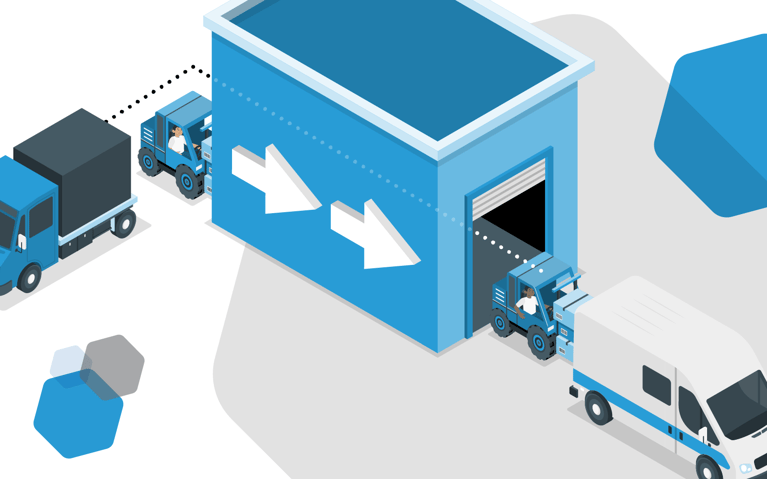Isn't online shopping just the bee's knees? It's like a global marketplace right at our fingertips! As ecommerce continually shapes the way consumers buy, and retailers sell, there's a growing emphasis on ensuring that this convenience doesn't come at the Earth's expense.
So, what's the issue with ecommerce and the environment? Let’s think about packaging. The sheer volume of parcels zipping around the globe means a whole lot of boxes, bubble wrap, tissue paper, poly bags, packaging tape, etc. And let’s not forget about all the carbon emissions likely pushed into the atmosphere by trucks and vans used to get that product to the customers’ front doorstep.
As we discussed in our building a brand story article, brands are desperately seeking ways to connect with consumers by aligning brand values with consumer values.
In a recent NielsenIQ study, it was found that 78 percent of US consumers embrace a sustainable lifestyle, while a McKinsey survey found that more than 60 percent of buyers would pay more for product from a brand that used environmentally friendly packaging.
This presents ecommerce merchants with a unique opportunity to champion sustainable transformations of the online business world. From the moment an online order is placed to the final doorstep delivery, the choices made by businesses can resonate far beyond mere transactions. An excellent and accessible way to commit to sustainability is through adopting eco-friendly shipping methods and sustainable packaging.
Understanding sustainable ecommerce
For a brand to be truly committed to sustainability, it must consider its environmental impact at every stage of its operations. This means conducting thorough lifecycle assessments to understand the environmental consequences of their choices, from sourcing raw materials to disposing of waste.
Sustainable packaging is about choosing materials that are eco-friendly, such as recyclable, biodegradable, or reusable options. It also involves minimizing excess packaging and designing for optimal size and weight. It’s all about reducing the carbon footprint and unnecessary waste associated with shipping.
Eco-friendly shipping involves selecting transportation methods that are energy-efficient and lower in emissions, as well as optimizing delivery routes to reduce extra mileage.
Sustainable ecommerce brands can also offset their carbon emissions, explore alternative energy sources, and engage in continuous innovation to reduce their ecological footprint. The threat of climate change demands that companies stop thinking of sustainability as a buzzword and start considering it a moral imperative that consumers (and the planet) demand.
Eco-friendly packaging options
We’ve all received those packages wrapped in layers of plastic, surrounded by bubble wrap, and nestled in nesting dolls of cardboard boxes. It's entirely wasteful, inefficient, and sometimes even useless. If you think that eco-friendly packaging is just brown and boring, think again! Companies are getting creative with their designs, making sustainable packaging both attractive and kind to the environment.
Here are some eco-friendly packaging options to consider:
Biodegradable packaging
Materials like biodegradable plastics, that can break down into natural substances, or biodegradable packaging made from cornstarch, sugarcane, or potato starch are available.
Compostable packaging
Formulated to break down into nutrient-rich compost under specific conditions, compostable plastics and packaging made from plant-based sources fall into this category.
Recycled content packaging
Reduce the demand for new raw materials. Post-consumer recycled material can be incorporated into various packaging materials, including cardboard, paper, and plastics.
Reusable packaging
Packaging designed for multiple reuses to minimize waste, including reusable containers, bags, and boxes.
Minimalist packaging
Reduce excess packaging and opt into minimalist designs to reduce overall environmental impact. Less material also often results in lower transportation costs and emissions.
Paper-based packaging
Paper, a renewable resource, can be an eco-friendly alternative. Look for FSC-certified (Forest Stewardship Council) paper products to ensure responsible forestry practices.
Mushroom packaging
Mycelium, the root structure of mushrooms, can be used to create packaging materials that are biodegradable and can even be composted at home.
Edible packaging
Some companies are experimenting with edible packaging made from natural materials like seaweed or starch, aiming to eliminate waste altogether.
Plant-based plastics
Derived from plant sources, such as sugarcane or corn, these plastics offer a renewable alternative to traditional petroleum-based products.
Water-based inks and adhesives
Environmentally friendly inks and adhesives in printing can reduce the environmental impact of the packaging.
Brands considering eco-friendly packaging options need to take into account the entire life cycle of the materials used, from sourcing to disposal, to create a truly comprehensive approach to sustainability. In addition, clearly communicating the eco-friendly aspects of your packaging to consumers with storytelling will help to boost the overall impact and contribute to an environmentally cautious image for your brand.
Sustainable shipping practices
To combat the emissions related to shipping practices, many companies and distributors are shifting towards electric delivery vehicles. From bicycles to vans, companies are electrifying their fleets to reduce greenhouse gas emissions. This reduces air pollution while saving companies money on fuel costs in the long run. Even governmental entities are starting to crack down on emissions related to shipping, making it the perfect time to adapt.
Here are some sustainable shipping practices to consider:
Carbon offsetting
Invest in carbon offset programs to neutralize emissions. Support projects that contribute to environmental conservation and renewable energy.
Collaborate with sustainable carriers
Select shipping carriers that prioritize sustainability in their operations; work with carriers that are committed to reducing their carbon footprint and improving their overall environmental performance.
Implement last-mile delivery solutions
Explore last-mile delivery alternatives such as bicycle and electric vehicle deliveries, reducing emissions in urban areas. Establish local distribution centers to shorten delivery distances.
Smart packaging technology
Use smart packaging technology to track shipments and monitor conditions during transit, reducing the likelihood of damaged goods and the need for returns.
Customer education
Educate customers about the environmental impact of shipping choices and encourage them to choose sustainable shipping options. Clearly communicate delivery timeframes to manage customer expectations and minimize rushed or expedited shipping.
Many retailers that have a brand commitment to sustainability are taking a holistic approach with their operations, ensuring every step is aligned with their environmental and social values. Brands that are prioritizing sustainability in their shipping not only lessen their environmental footprint but also resonate with environmentally conscious consumers.
Future trends in sustainable ecommerce
What’s on the horizon in the world of sustainable ecommerce? One exciting trend is the rise of local and decentralized fulfillment centers. These centers are strategically located to reduce shipping distances, cutting down on emissions. This benefits the environment by reducing greenhouse gases while enhancing delivery speed, too.
Another trend to watch is the use of artificial intelligence and data analytics. These technologies can help optimize shipping routes, reduce energy consumption, and minimize waste. Thanks to the integration of AI in so many areas of online shopping and order fulfillment, it’s sure to be a valuable tool in reducing emissions and waste.
Sustainable ecommerce for the planet
It comes as no surprise that a growing number of consumers are all about supporting businesses that care about the planet. In today’s competitive landscape, consider going green to help give your brand and products that competitive edge. It's not just about using eco-friendly packaging or hopping on the eco-shipping train; it's about a total green makeover. It’s not just a feel-good trend; it's a game-changer that's steering the future of shopping, online and in stores.
By embracing sustainable practices, ecommerce merchants not only meet their ethical duties but also set themselves up for long-term success in a world that's all about being eco-savvy. This shift towards sustainability isn't a quick fad; it's a big shift that's here to stay, shaping how we shop in the future. As the Earth's guardians, it's high time for online stores to be the leaders in making retail eco-friendlier and more awesome.
Subscribe to our emails for the latest industry insights!
By entering your email, you agree to receive marketing emails from Cart.com






